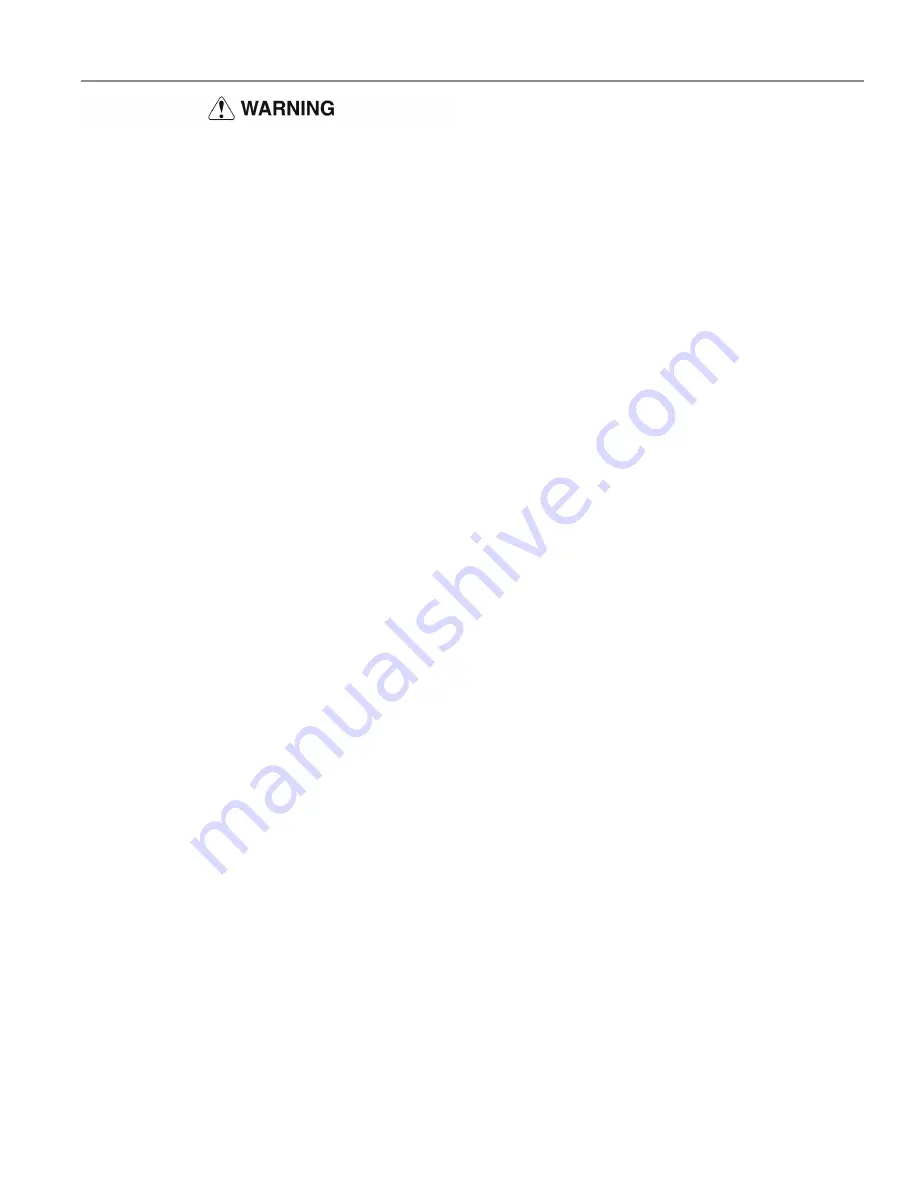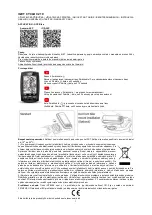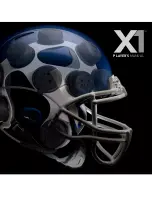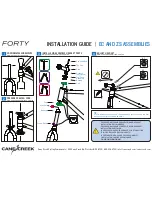
1
Read all instructions before assembling or op-
erating the tow dolly. Failure to understand how to
assemble or operate the tow dolly could result in
property damage, personal injury or even death.
1.
The trailer ball, ball mount, receiver and motorhome
must all be rated to pull a weight that exceeds the
combined weight of the tow dolly, towed vehicle and
all of its contents.
2.
Do not pull more than 4,250 pounds with the tow
dolly. Remember to add the weight of all contents within
the towed vehicle when calculating its total weight.
3.
The motorhome must be at least 1,000 pounds
heavier than the towed vehicle. If not, the momentum
of the towed vehicle and dolly will attempt to push the
motorhome, resulting in “fishtailing” or “jackknifing.” This
force can easily cause a loss of control that can result
in severe damage or a life-threatening accident.
4.
The tow dolly is equipped with electric brakes. For
the electric brakes to function, a brake controller must
be installed in the motorhome. Even with adequate
braking capacity, the combination of vehicles will require
additional stopping distance that must be accounted for
when towing.
Refer to the manufacturer's instructions to set the
controller to the appropriate weight for towing; be
certain to reduce the braking force if the dolly is ever
towed unladen.
5.
Avoid sharp turns when towing with the dolly loaded
— always turn with as wide a radius as possible. Turning
too sharply may cause the towed vehicle to contact the
tow dolly fender, causing damage to the towed vehicle
and dolly.
6.
Do not back up the dolly when loaded. The steer-
able wheels can easily “jackknife” and cause severe
damage to both vehicles and the dolly.
The dolly can be backed up when empty, if the
steering pin is in place.
7.
The towed vehicle cannot exceed 78" (with the axles
wide) or 70" (with the axles narrow) in overall body
width at the front fender wells. If the towed vehicle
exceeds this width, severe damage may occur to the
tow dolly and the towed vehicle when the steerable
tires pivot to track the motorhome.
8.
Before loading any vehicle, be sure that the ramps
and axles are adjusted to the correct width.
9.
When the dolly axles are adjusted from narrow to
wide or wide to narrow, the tow dolly must be realigned.
See the section titled “Alignment instructions.”
10.
Before backing the towed vehicle off the dolly, be
certain that the bed tilt lock has been properly released.
If you attempt to unload the dolly without releasing
TOW DOLLY SAFETY REQUIREMENTS
the bed tilt lock, the dolly and towed vehicle may be
severely damaged.
11.
Replace broken, worn or defective tow dolly com-
ponents before towing any vehicle.
12.
Torque the wheel lug nuts to 90 ft./lbs. every 50
miles for the first 200 miles. Torque every 3,000 miles
thereafter.
13.
Check the air pressure on both tires every 3,000
miles. Inflate to 50 lbs. psi. Also inspect the tires for any
road damage or unusual wear. Do not tow on improperly
inflated tires — the result will be premature tire wear.
14.
Always connect the dolly to the motorhome before
loading the towed vehicle. Similarly, always unload
the towed vehicle before disconnecting the dolly from
the motorhome. It is nearly impossible to control the
combined weight of the dolly and towed vehicle when
disconnected from the motorhome.
15.
When connecting the safety chains to the motor-
home, cross them underneath the coupler. If the coupler
should ever disconnect, the crossed chains will support
the tongue of the dolly, helping to prevent it from dig-
ging into the road.
16.
The steering pin must be removed when towing
a vehicle on the dolly. Removing the pin allows the
wheels of the dolly to pivot behind the motorhome. If
the wheels cannot pivot, the towed vehicle will pivot on
the dolly, causing severe damage to the towed vehicle
and dolly.
The pin must be replaced when towing the dolly
empty. Without the weight of the towed vehicle, the
tires could bounce sideways and drag at an angle in
the direction of travel, causing severe damage to the
tires, wheels, axle and other components.
17.
The towed vehicle’s steering wheel must be locked
or otherwise secured when towing. Failure to lock the
steering wheel will allow the towed vehicle to pivot on
the bed, causing it to hit the fender and wheel assem-
blies of the dolly. Severe damage will result to both
vehicles.
18.
When loading and unloading, be careful not to burn
yourself on any chassis or engine components that may
still be hot. In addition, the underside of the vehicle may
have sharp edges and corners that can cause cuts and
abrasions.
19.
Do not ride on the tow dolly or in the towed vehicle
while it is being towed.
20.
If the towed vehicle has rear wheel drive, be certain
it can be towed without damaging the transmission. If
necessary, drop the driveshaft to protect the transmis-
sion.
21.
Always load the towed vehicle facing forward. If
the vehicle is loaded backwards, the front wheels will
not stay in line with the dolly. This will cause severe
fishtailing and swaying, which may result in damage
continued on next page




































